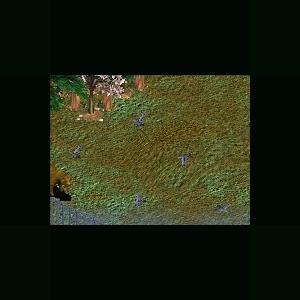About This File
The Steller's Jay (Cyanocitta stelleri) is a jay native to western North America, closely related to the Blue Jay found in the rest of the continent, but with a black head and upper body. It is also known as the Long-crested Jay, the Mountain Jay, and the Pine Jay. It is the only crested jay west of the Rocky Mountains.
The Steller's Jay shows a great deal of regional variation throughout its range. Blackish-brown-headed birds from the north gradually become bluer-headed farther south. The Steller's Jay has a more slender bill and longer legs than the Blue Jay and has a much more pronounced crest. The head is blackish-brown with light blue streaks on the forehead. This dark colouring gives way from the shoulders and lower breast to silvery blue. The primaries and tail are a rich blue with darker barring.
It occurs over virtually the whole of the western side of North America from Alaska in the north to Central America in the far south and east to south-western Texas, completely replacing the Blue Jay in most of those areas. Some hybridization with the Blue Jay in Colorado has been reported. The Steller's Jay lives in coniferous and mixed woodland, but not in completely dense forest, and requires open space. It typically lives in flocks of greater than 10 individuals.
This bird is named after the German naturalist Georg Wilhelm Steller who discovered them in 1741 (Evans 1986).
Habitat
The Steller's Jay primarily lives in coniferous forests but can be found in many forested areas. They can be found in low to moderate elevations as high as the tree line, but rarely go that high. Steller's Jays are common in residential and agricultural areas with nearby forests. The range is primarily west of the Rocky Mountains, reaching as far south as Central America and as far north as Alaska.
Diet
As they are omnivores, their diet is about two-thirds plant matter and one third animal matter. Food is gathered from both the ground and from trees. The Steller's Jay's diet consists of a wide range of seeds, nuts, berries and other fruit. Many types of invertebrates, eggs, small rodents, and nestlings are also eaten. There are some accounts of them eating small reptiles, both snakes and lizards. Acorns and conifer seeds are staples during the non-breeding season; these are often cached in the ground or in trees for later consumption. They exploit human-provided food sources, frequently scavenging picnics and camp sites.
Reproduction and Nesting
The nest is usually in a conifer but is sometimes built in a hollow in a tree. Similar in construction to the Blue Jay's nest, it tends to be a bit larger (25 cm to 43 cm), using a number of natural materials or scavenged trash, often mixed with mud. Between two and six eggs are laid during breeding season. The eggs are oval in shape with a somewhat glossy surface. The background colour of the egg shell tends to be pale variations of greenish-blue with brown- or olive-coloured speckles. The clutch is usually incubated entirely by the female for 17 to 18 days.
Vocalizations
Like all jays, its calls are numerous and variable. Notably, its alarm call is a harsh nasal "wah". It also imitates the cry of the Red-tailed Hawk and Red-shouldered Hawk, which has the effect of causing other birds to vacate feeding areas at the Steller's Jay's approach. Some calls are sex-specific; females produce a rattling sound while males make a high-pitched "gleep".
Source: Wikipedia
Updated 2010-11-21
Just to save space with less in zip and smaller image.
Nothing new.



Recommended Comments
There are no comments to display.
Create an account or sign in to comment
You need to be a member in order to leave a comment
Create an account
Sign up for a new account in our community. It's easy!
Register a new accountSign in
Already have an account? Sign in here.
Sign In Now